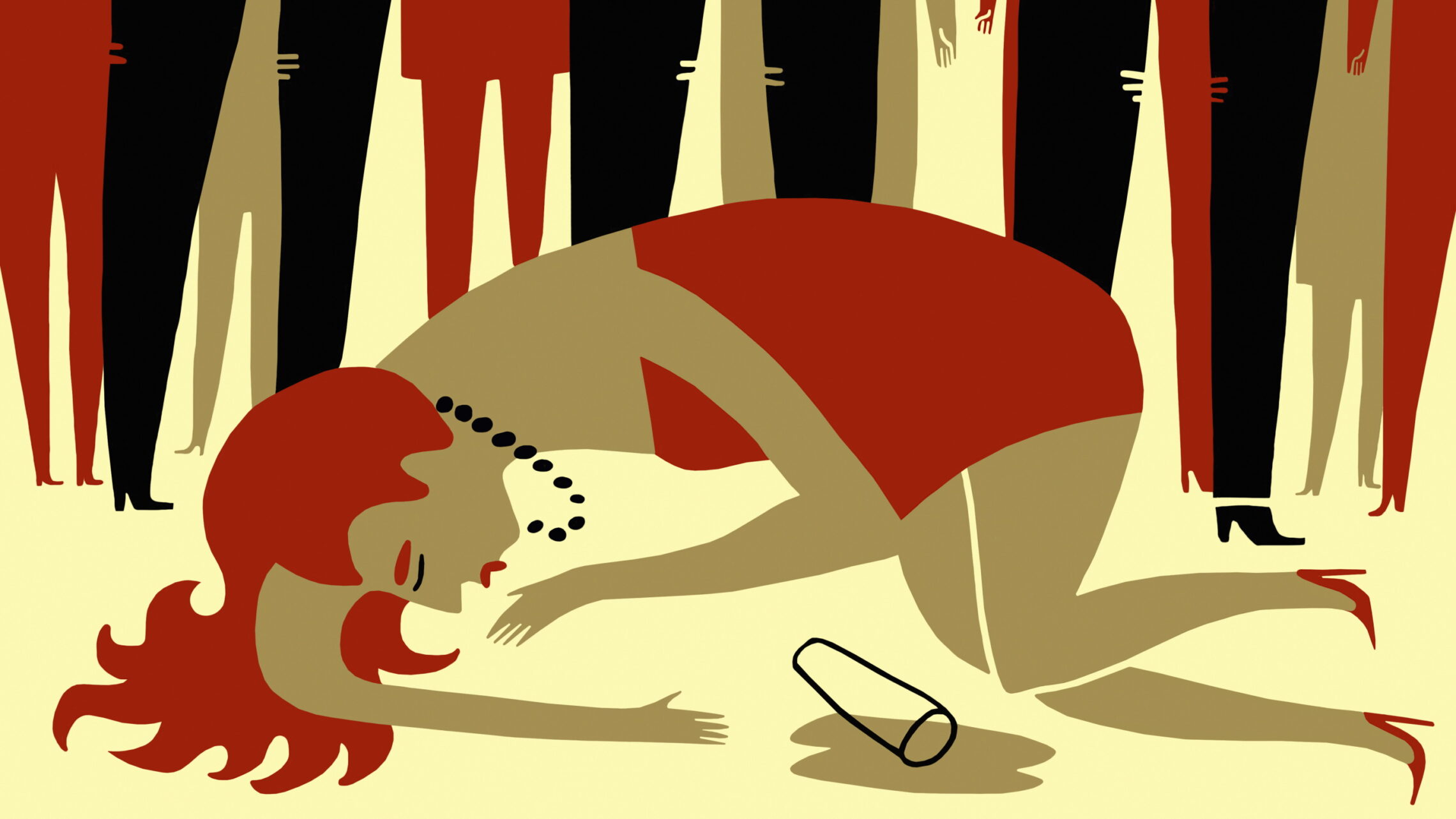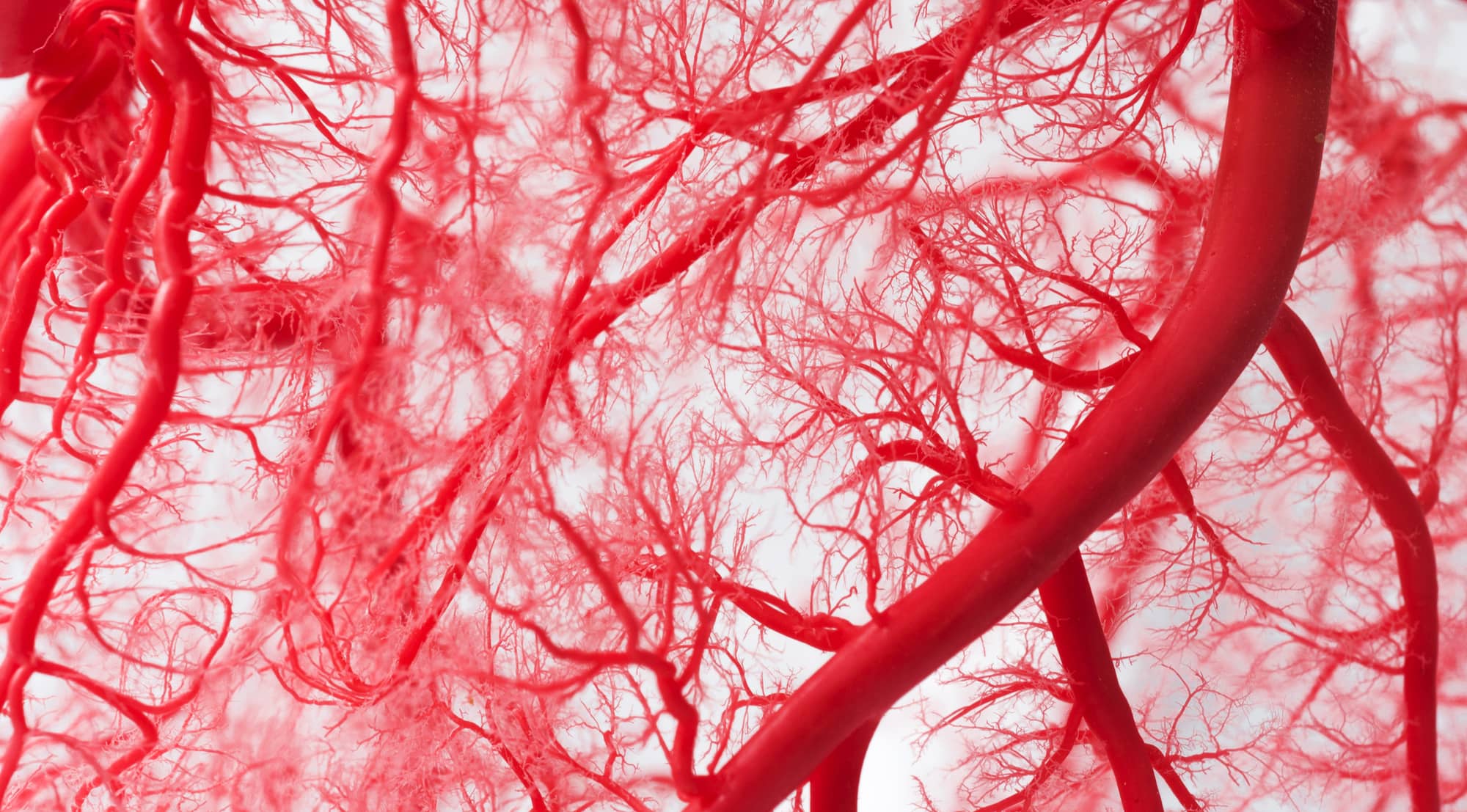When the sector thinks about student safety – particularly in the realm of sexual harassment and misconduct – there’s often an air of resigned frustration in the conversation.
“These are problems in wider society,” runs the train of thought, “and there’s only so much we can do.” So while posters will be procured and initiatives funded, that set of questions – on whether it’s really universities’ job to prevent, process and prosecute this kind of thing – are never far away.
It’s been a long time since the main venues for student socialising were the students’ union bar and nightclub, but at least where concerns about conduct were centred on student spaces there was always a sense that university or SU-run venues might be caused to operate them in a way that took safety more seriously than the legally required minimums.
So what now, when such venues are in a tiny minority? What happens when a national moral panic sweeps the country over the spiking – by drink and by needle – of students? Whose job is it to work out if it’s happening? Who should be preventing it if it is? And who can we hold to account for inaction?
Prevailing coverage
Throughout this academic year, ever since a Mumsnet thread catalysed nationwide press coverage of spiking in the UK, there has been a wave of student-led activity and activism across university campuses in response.
The Girls Night In campaign – with chapters based in multiple student towns and cities – has seen students across the country boycotting night clubs and issuing them with a list of improvements they would like to see – like accessible safe spaces, training for all staff, and an identifiable welfare officer. The campaign has also been calling on the government to fund free drug testing kits for drinks.
If we look at the anecdotal numbers surrounding spiking, it’s easy to be persuaded that this is exactly the sort of action which needs to be taken. Back in October, The Tab ran an Instagram survey which found that from 23,000 responses from 19 different universities, 2,625 students suspected they had been spiked at some point that academic year. The Independent commissioned a YouGov poll which found similar numbers – 11 per cent of women and six per cent of men reported having experienced spiking.
Yet none of this polling manifests into tangible prevalence data. Hospitals will not treat suspected spiking cases, with students’ union staff informing me of frustrating incidences where students have been turned away from A&E. One student from a Russell Group university called an ambulance after she became unwell one night:
They didn’t even bother to check my heart rate. It made me so angry because I was just pushed to the side as a ‘drunk uni student.’ The only time I saw a doctor was when he came to discharge me at which point he laughed that I must have had fun last night. I had no monitoring, no drugs test. Nothing.
Only a small portion of suspected spiking cases are reported to the police. Helen Conbear, chief executive of the Alcohol Education Trust testified in a parliamentary select committee hearing that the trust’s data showed only eight per cent of people who believe they were spiked approached the police. This is even with levels of reporting doubling to 1,400 annually across the UK in 2021.
Kelly Balmer, the co-founder of The Last Taboo, a UK-wide campaign that empowers university students across the country to raise awareness, address and tackle the issue of sexual violence and harassment, said that the campaign found out of 100 survey responses from students who believed they had been spiked, only 30 reported to police. She believes this is to do with police hostility:
People are scared and they don’t think anything will happen as they don’t have any evidence. They are scared of being victim-blamed or accused of being just too drunk or making false claims. And, this is not to mention the significant lack of trust in the police at the moment.
And of these reports, prosecutions are extraordinarily low. In 2020, there were just eight prosecutions from 742 reported spiking incidents in the UK. But here’s the kicker – none of them were for spiking. Because spiking, as an act in and of itself, is not a crime. Spiking can only compound the sentencing of another criminal act – if it’s prosecuted, it is done so as assault, drink spiking with drugs is prosecuted as supply, and spiking to then sexual assault your victim is processed as rape. And we all know what how many successful prosecutions of rape there are.
This all poses a problem – one illustrated particularly when a witness at Home Office Select Committee’s parliamentary hearing into spiking said that the motivation for most spiking seemed to be “humour” and to “laugh at the victim”:
It’s about power and control over seeing someone so uncomfortable. People have done it with revenge. It’s not people with criminal intent, it’s normal people – students with a horrible mindset.
Matt Smith, VP Sports at the University of Southampton Students’ Union has carried out extensive work on creating a safer night culture for students – and he agrees:
Some of it is random and that’s the weird thing. There isn’t a massive link between being spiked and then being assaulted. People seem to be doing it for fun.
Stamp Out Spiking is a campaign group seeking to establish spiking as a criminal act, but progress is slow, and if most spiking is currently detached from a tangible offence it leaves victims with no recourse to justice and the data surrounding prevalence unaccounted for. Without hospital treatment, there can be no clinical confirmation of spiking incidences.
Moral panic at the disco
As ever, it’s the sector that’s stepping into the breach. In light of his local A&E department refusing to offer blood tests, one students’ union chief executive I spoke to has just invested £30,000 into the purchase of a rapid drug testing machine – more to reassure students that they are actually safe in the campus venue than to confirm spiking.
On a night where police stood on campus with him swabbing students for drug residue – which was welcomed enthusiastically by students – only six out of 120 students had traces of illegal substances on – but not in – their bodies. At the select committee hearing, Julie Spencer, Head of Student Wellbeing at the University of Lincoln explained to MPs that whilst they had tested 32 students for spiking, only one test came back positive.
So why do so many students believe that they have been spiked when rates of medical confirmation are so low? The union chief executive tells me:
Students are scared, especially given that spiking has been in the news. They find a mark on them, which could have come from bumping into something, but their mind goes to needle spiking because that’s what everyone is talking about. Then they panic so they hyperventilate and their palms get sweaty. Then their heart races. And suddenly they have the physiological symptoms of being spiked, as well.
Falsely attributing symptoms of anxiety to symptoms spiking is easily resolved, but what if automatically concluding spiking obscures other medical emergencies? A student who, it is confirmed, has not been spiked but is experiencing severe nausea, is still experiencing severe nausea.
A description one woman gave of suspected spiking was that one side of her body went numb and she temporarily lost the ability to move her legs. Her friends concluded she had been spiked and, as they knew hospitals would not test for spiking, got her safely home. Numbness along one side of your body is consistent with a stroke. Luckily, this student was fine in the morning. A man who suspected he had been spiked said:
I can’t be certain it was a drug that caused it but I was having problems with my kidneys and liver.
These are vital organs and their malfunction is a serious concern. Students are told that chattering teeth, blurred vision, and loss of bladder control are symptoms of having been spiked with rohypnol. But these are also symptoms of sepsis. If students are routinely believing that they have been spiked but are not seeking medical help when there is something else seriously wrong, then lives re potentially being put at risk.
Harriet Kennedy, VP Wellbeing and Community at Lincoln Students’ Union, has an answer. Alongside a rapid drugs testing service that the union runs in collaboration with the university’s wellbeing team, they have also paramedics on-site:
We test for spiking in order to rule out that as an option of what the problem could be. If the student is still exhibiting symptoms then they can see the paramedics to ensure that they get the correct medical attention that they need.
This is the real life
None of this is to say that many fears around spiking are unsubstantiated. Even if students are not being covertly injected with unknown substances, or having their drinks tampered with, the widespread panic speaks to a wider problem – that students, particularly women, feel unsafe on campus and in student venues.
A student from the Exeter-based night safety group Urban Angels said that spiking was just part of the “relentless harassment” students face on a daily basis – “It follows us into the night.” If you are one of the two in three university students who has already been sexually assaulted, is it such a jump to believe that the cause of your sudden nausea was purposeful and by someone with a malicious intent?
So, despite claims of moral panic, spiking is not an irrational fear and we must be very careful not to use the low levels of confirmed incidents to dismiss concerns around women’s safety. One student who took part in the Edinburgh Girls Night In said:
We stayed in to highlight the risk of going out as a woman when you could be spiked.
But “we stayed in to highlight the risk of going out as a woman” is a valid sentence in itself. The real fear around spiking may not be whether you have actually been, or could likely be spiked, but that if you find yourself in a vulnerable position – whether spiked, too drunk, unwell for another reason, or even just on your own at night – you are not safe.
It is not just about whether needles are being snuck into clubs, it is the fact that bouncers routinely throw intoxicated students out of venues, taxi drivers refuse to take them home, police dismiss concerns, and A&E staff refuse to treat unwell young people. When we look at how we treat students trying to navigate their social lives in a climate of sexual violence, it is unsurprising that students are so frightened.
All of the advice on sexual misconduct tells us that when students come to us believing that something has happened to them, we need to believe them, listen to them, and provide them with support – in the knowledge that their concerns stem from real societal issues. Reflecting on the services Lincoln provides, Kennedy said:
Regardless of the results coming back negative, which in itself offers peace of mind, the feeling of support and being looked after, as well as being listened to on what their concerns are is important for students.
The feeling of safety
Across the country SUs and universities have been focusing on generating feelings of safety. In Southampton nightclubs responded to the boycott with stricter precautions such as enhanced door security where clubbers must swipe a form of photo ID to enter, free drink toppers, and a Student Safety Charter which had been approved by the local council, the venue licensing team, and the police. A student who took part told me that:
It speaks to the wider values of the club if they do it. Even if spiking has never occurred there, when we see that they are actively looking after us, we know it’s somewhere we can let our hair down and that if something does happen then it’s like, well, they are here for us if it does.
SUSU’s Matt Smith has been coordinating efforts in the city. He recently received £5k from the City Council for violence reduction initiatives which he has invested into Good Night Out training for venue staff and the continuation of a free safety bus service which runs from the campus bar 10pm – 2am every night, every hour, and gets students home safely.
But not every student city has been so receptive, and why should students be depending on the efforts of SU officers? According to the Licensing Act 2003, businesses, organisations and individuals who want to sell or supply alcohol in England and Wales must have a licence or other authorisation from a licensing authority – usually a local council.
During the debate staged by the Petitions Committee into spiking on 9th December 2021, Home Office minister Rachel Maclean argued that the act requires local authorities (in England and Wales) to take a “tailored approach” to granting premises licences in order to uphold the four licensing objectives. One of those is the objective to prevent crime and disorder, and another is public safety.
Licensing authorities can impose conditions on any business that want to sell alcohol, which can include requiring the presence of suitably trained and accredited door staff or CCTV. A licensing authority can also require a licence holder to introduce entry searches as a condition of a premises licence. These are the sorts of things that GNI campaigners have been calling for.
During the debate, Jess Phillips MP asked “how many licensing committees have their eye on violence against women and girls across the country and will be paying attention to this issue.” Maclean replied with:
I can assure the hon. Lady that we insist on it and require them to do so, and it is part of their statutory duty. They are of course accountable to their populations, and they are staffed by locally and demographically accountable members of their council.
To determine whether this assertion is true, we have read the Statement of Licensing Policy currently in use in each of the major university towns and cities in England and Wales. The findings can be found in a Google Sheet here.
Only two make meaningful reference to the crimes of adult sexual harassment or assault, or gender-based violence and the strategies licensees should adopt to reduce or prevent it. Yet all make multiple specific references to other types of crime, including violence, drug abuse, use of firearms, child sexual exploitation, etc.
Shouldn’t every university that thinks of itself as concerned with student safety, or that is “civic minded”, be thinking about lobbying locally to change that position?
Closer to home
But as well as an important focus on the night time economy – the danger may also be closer to home – especially where students are living in halls and HMOs.
In Southampton, Smith has recently run a town hall event where all local nightclub owners were invited onto a panel to be questioned by students about safety measures at their student events. When questioned what they were doing to keep students safe from those with malicious intent, one owner pointed out that these nights were student nights in which attendees needed to produce a valid student ID to enter. If spiking is occurring on these nights then it is students who are the culprits.
This squares with testimony given in parliament by Dawn Dines, the chief executive of Stamp Out Spiking, that the majority of students are spiked by fellow students in private residences and, interestingly, the majority of spiking is done when someone puts more alcohol into a drink than the recipient asked for rather than with other drugs or substances.
Smith said that for the majority of students, they think they are just being nice:
If someone asks for a single then their friend might get them a double to try and be friendly or generous.
If that is the definition of spiking then surely we have all been spiked? I know I have. But maybe that is the point. Spiking is not committed by a shadowy stranger in the corner of a club. It is committed by the friend in the kitchen who decides it would be fun to make someone’s vodka and coke a little bit stronger.
Kelly Balmer from the Last Taboo (and now Community and Wellbeing Officer at YUSU) argues that we need more than just posters up in toilets about spiking in clubs:
We need a coordinated effort to counter this pervasive mindset. It needs to be a constant education piece, not just a consent talk at the beginning of the year.
And Smith agrees:
We need to make it socially unacceptable to give someone more alcohol than they have asked for, especially when we don’t know their medical history or their plans for the night like if they’re walking home alone and plan to be sober. It is part of a wider conversation on consent and respecting limits, particularly as just giving someone more alcohol isn’t against the law.
It is not. But the good news is that, as with sexual misconduct, universities can place spiking firmly within their behavioural misconduct policies. They do not need to wait for the law to catch up, nor do they need beyond-reasonable-doubt hard evidence, but rather can act on the balance of probabilities. Birmingham, Exeter, Newcastle, and Warwick have all recently introduced drink spiking as misconduct in and of itself to their student behaviour policies.
If we are defining spiking as a surplus of alcohol, and the vast majority of it occurring in student households by students I am unsure how many incidents will ever reach investigation. And anyway, at this scale, if all incidents did reach a misconduct hearing, universities would not have the resources to investigate them.
This is why for SU officers like Smith, education and conversation is perhaps the most important tool we have:
I think it’s improving. People are respecting other people’s limits. There’s also so many more provisions around non-drinking socials. If you go back a few years it would be unheard of, you know, allowing people to be sober all night or only drink a little. You used to be pressured to drink at university but I think this changed pretty quickly at Southampton when they started getting a lot of heat for it.
Rather than dismissing students’ concerns, we need to listen closely to what they are saying, and work out where they are coming from. Perhaps it’s true that stories of students losing control of their bodies after being spiked with needles are not so widespread. But within this narrative there are truths around the lack of control students feel they have over their own safety. When they are listened to, instead of rejected, universities and SUs can work with them to find tangible solutions where they gain autonomy, confidence, and safety.













It is no coincidence that fears of needle-spiking have increased at a time when injections, vaccinations and ‘jabbing’ with needles are all over the news. The pandemic has also raised everyone’s general anxiety levels.
This is a superb summary of where we are and raises lots of important questions about where we need too go next and what we can do about the problem. I doubt we can find a perfect solution but there are a number of steps that can and should be taken, starting with making spiking a crime and focusing on better education about consent, boundaries and the drinking culture as a whole.